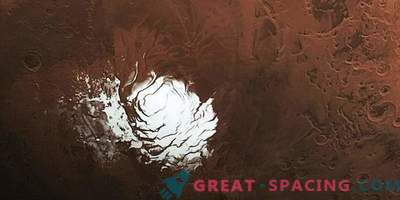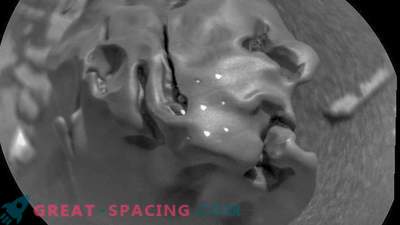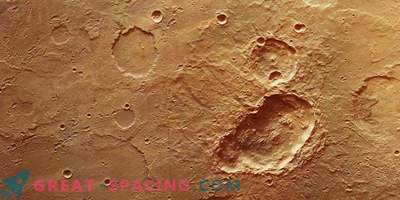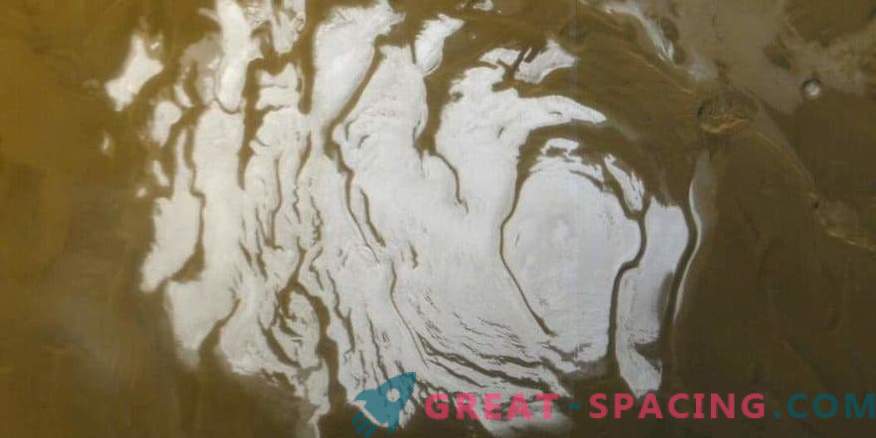
Under the southern polar cap of the Red Planet an underground lake is hidden.
A new study indicates that a salt lake can hide under a Martian glacier. Salt water at freezing does not have a hospitable environment for life, but we find organisms in more extreme places. Can there be living creatures in the lake?
If so, what form of life are we talking about? Once Mars was more watery and warm place, so it can live on an ancient form of life - petrified or alive. It is also possible that terrestrial microbes accidentally polluted the planet during past space exploration missions. Of course, you should not look for large animals. On Earth there are some insects, fish and other organisms that can survive in sub-zero temperatures. But Mars is devoid of food chains necessary for the development of higher organisms. But this is not an obstacle for many resistant microorganisms.
Earth has proven that there are microbes that can survive in salt water. Moreover, a group of halophilic microbes have adapted to high levels of salt (even saturated with sodium chloride). Many terrestrial halophiles do not suffer from UV radiation and low temperatures. Some are even adapted for cellular respiration in the absence of oxygen.
Low temperature
The main barrier to life is likely to be a low temperature index (-70 ° C). But the Martian temperature is less cold than the mark in terrestrial freezers used to keep microbial cells or other biological material in a sleeping, but viable state. Moreover, some salts actually prevent freezing even at low temperatures, which is expected in a Martian lake. Therefore, there is hope that some microbiological systems can survive on Mars.

Orange halophilic algae Dunaliella saline (Dunaliella salina) in sea salt
Scientists know that microbes can live in a dormant state. But there is no full confidence in the duration of such a life: thousands of years or longer. Plants and animals, like roundworms, were reborn from the permafrost, where they remained frozen for 30000-42000 years. It was also possible to extract microbes from fluids inside ancient crystals.
Varieties of salt
The hardest thing to demonstrate is that cells can maintain an active state in Martian conditions. Liquid water is needed for reproduction. Salt helps determine if microbial activity can occur in water. The proportion of water molecules in the solution is called the relative molar fraction of water (water activity). This parameter is able to dictate the possibility of the existence of life in a particular place and time interval.
The water activity is influenced by the types of salt and dissolved nutrients. Some substances dilute water molecules and hold them through chemical bonds, sometimes blocking access to cells. In summary, the chemical nature of the dissolved compounds can determine whether proteins, membranes, and other systems will survive and maintain sufficient stability and flexibility for functionality.
The most common in terrestrial conditions is salt water with a predominance of sodium chloride. Mars is leading sulfate salts. But no one knows if this type is in the found lake. If yes, then the microbes will not be good. One of the studies showed that waters with sulphate salts are able to have a higher ionic strength than earth waters, which makes the place uninhabitable.
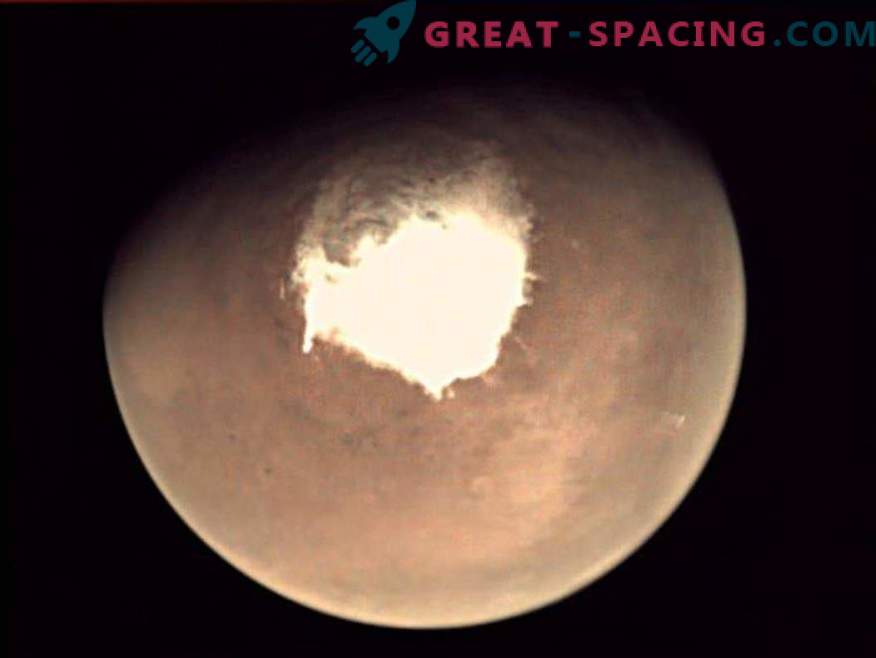
The red planet welcomes ExoMars (the south pole is shown)
Other types of salt, such as magnesium chloride and perchlorate, improve the flexibility of biological molecules in sub-zero temperatures, which means they increase cellular metabolism. Such salts promote microbial growth. The presence of glycerol, alcohols and fructose is also positive.
Salt water is a complex environment. Researchers know a lot about terrestrial conditions, but there is still little information about the behavior of microbes in critical conditions. If the presence of a salt lake on Mars is confirmed, then you need to find out the type of salt.
Luggage storage?
The earthly picture shows that low water activity, chaotropic conditions and an indicator of -70 ° C make it possible to save life. But safety does not indicate activity and development. The known growth limits on Earth relate to parameters from -15 ° C to -20 ° C for the most resistant microbial species. Limits for cellular metabolism: from -20 ° C to -40 ° C. That is, as long as there is no organism corresponding to the Martian conditions.
If terrestrial microbes live in the Martian environment, then they may be alive, but inactive. However, it is likely that they will “wake up” as soon as the temperature on the Red Planet rises. It turns out that a salty Martian lake can function as a storage chamber (a kind of cradle of life), where microbes are waiting to be discovered.












